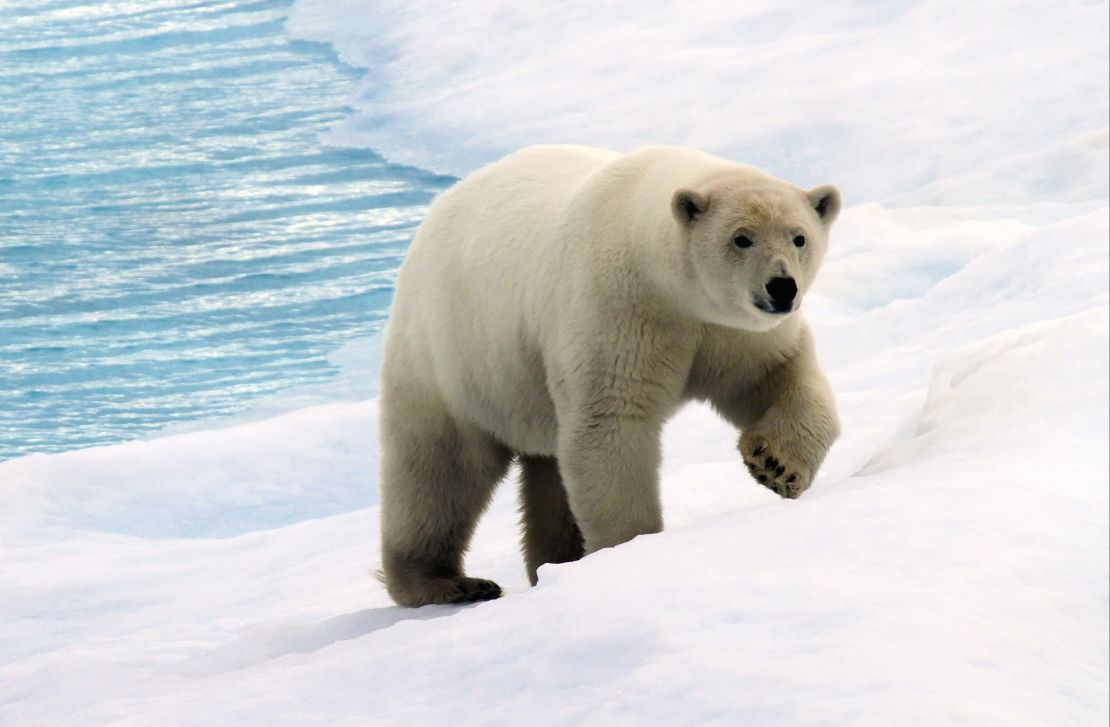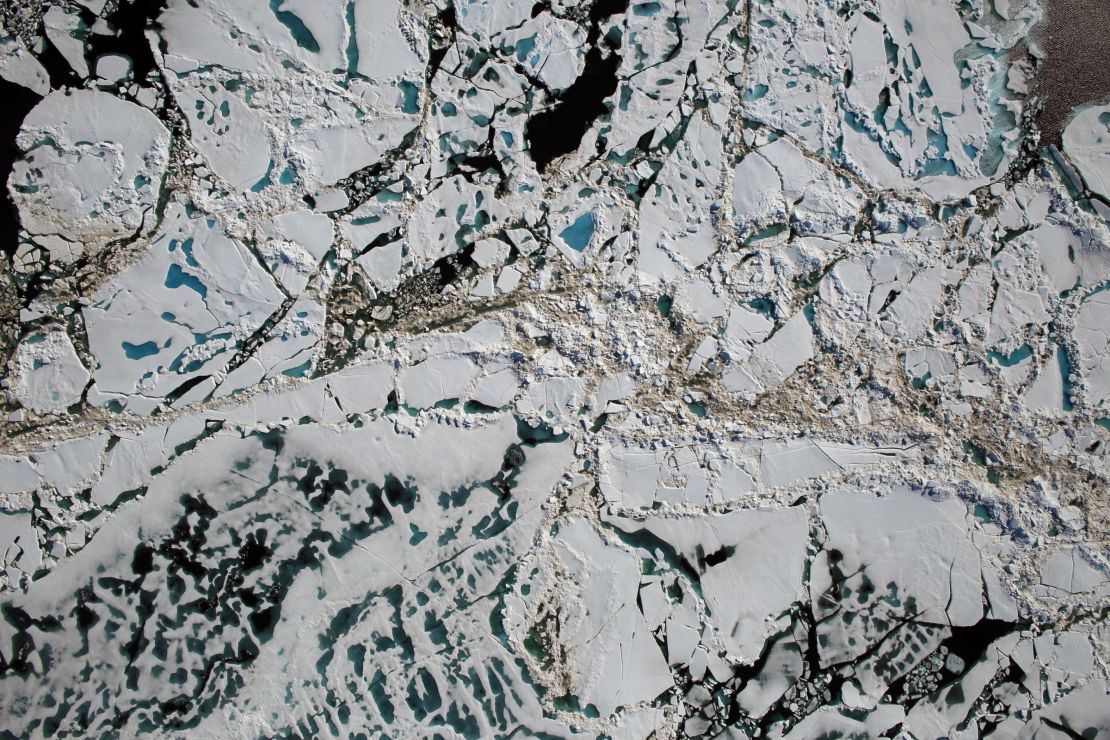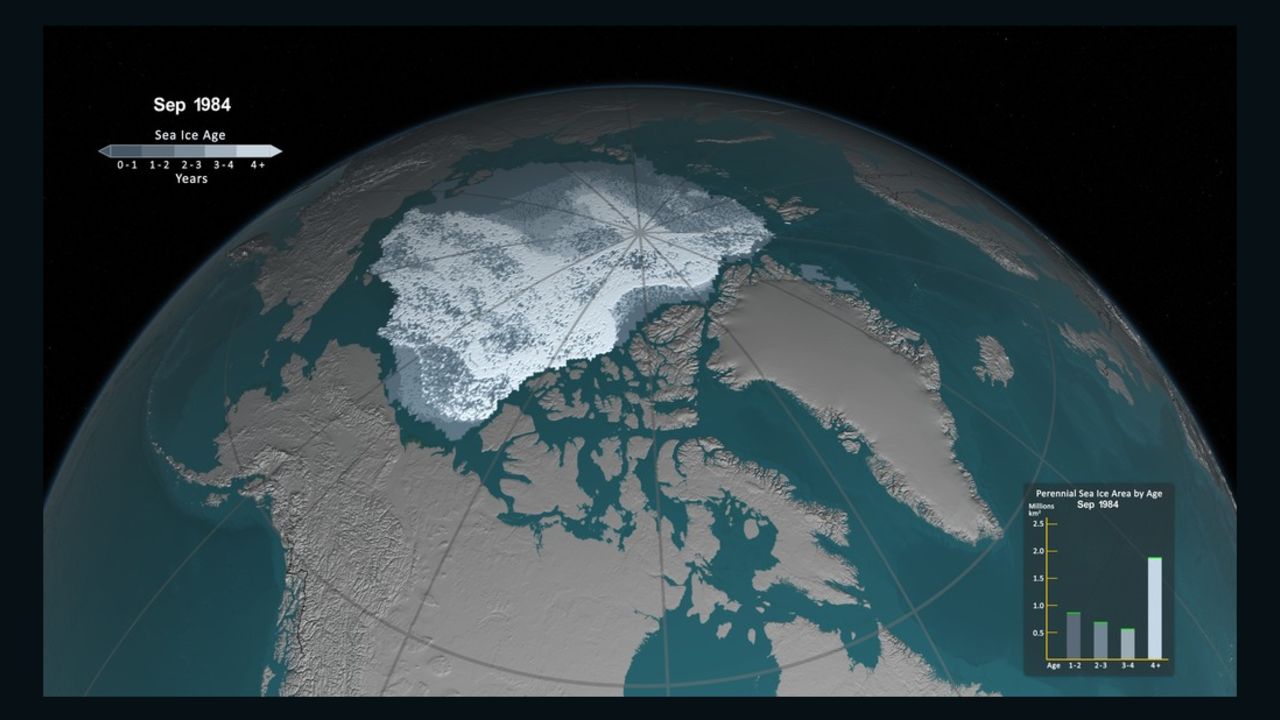Story highlights
Polar bears under threat, says US Fish and Wildlife Service report
Report focuses on preventing human-bear conflicts, protecting habitats and minimizing oil spills
It is estimated there is 26,000 polar bears worldwide
As the Arctic heats up twice as fast as the rest of the world and sea ice and snow declines rapidly, polar bears will struggle to survive, according to a US government report published on Monday.
Rising global temperatures is the single most important threat to the polar bears, which rely on sea ice to catch prey, according to the US Fish and Wildlife Service report.
“Without significant reductions [in global temperatures] … it is unlikely that polar bears will be recovered,” the agency said – meaning that the species will continue to be considered endangered.
This is what climate change looks like
As a way for researchers to better understand how polar bears are coping with declines in Arctic sea ice, point of view cameras were attached to an adult female bear by the US Geological Survey.
The footage revealed a snapshot of the daily life for a polar bear in the southern Beaufort Sea in the Arctic and allowed scientists to study any changes in the animal’s behavior and feeding rates.
The footage highlights the importance of sea ice and how the bears use their incredible sense of smell to hunt down prey.
“Seals will come out to rest (from the cracks in the sea ice) and that’s where you find most of the polar bears hunting,” the World Wildlife Fund’s (WWF) UK polar program manager, Rod Downie, told CNN.

According to WWF, polar bears spend over 50% of their time hunting, but less than 2% of their attempts are successful.
But it’s not just hunting that the polar bears use sea ice for.
“They also need sea ice to travel between areas to find mates – it’s a critical part of their ecosystem [so] if they lose that it’s bad news for them,” said Downie.
He said the reason why there’s increased human-bear conflict is because the animals are hungry and encroaching on community land.
“Because [polar bears are] remaining on land more and more they’re coming into contact with human communities … children might be walking to school and risk the threat of being attacked by a polar bear.”
Downie said the normal reaction would be to kill the bear, so the WWF is working to educate communities on other ways they can deter bears – through firecrackers and correct food storage.
One third of polar bears could disappear this century
In 2008 the US Fish and Wildlife Service listed the polar bears as threatened under the Endangered Species Act and in its new conservation management plan it outlines a number of short-term actions to tackle the threat.
It calls for the reduction of human-bear conflict and hunting, the protection of habitats and the managing and minimizing the risk of oil spills.

While the recovery plan primarily focuses on alternative ways to protect the species, it repeatedly emphasizes the importance of tackling climate change.
“Without decisive action to address Arctic warming, the long-term fate of this species is uncertain,” said the Alaska Regional Director of USFWS, Greg Siekaniec.
It’s estimated there are about 26,000 polar bears worldwide, but scientists have predicted as temperatures continue to rise, one third of the species could disappear by 2050.
Downie told CNN the effects of climate change is uncharted territory. “In modern history we’ve not known an Arctic without the polar bears and it would be a tremendous loss to the Arctic, to the Arctic people and to humanity.”
What’s going on in the Arctic?
Scientists recently released a time-lapse animation that compared Arctic sea ice since 1984 with now – and the results were startling.
The old sea ice that lasts year after year is smaller than it has been in three decades.
Read: Arctic heating up at twice as fast as rest of globe
“Rarely have we seen the Arctic show a clearer, stronger or more pronounced signal of persistent warming and its cascading effects on the environment than this year,” Jeremy Mathis, director of NOAA’s Arctic Research Program, said in a statement.
Young ice has struggled to reach 2 meters thick during winter months and as a consequence, is more likely to melt during the summer.
Read: Amid higher global temperatures, sea ice at record lows at poles

Temperatures have soared in the Arctic recently and scientists are struggling to explain why.
Air temperatures have been running more than 35 degrees Fahrenheit (20 degrees Celsius) above average.
























